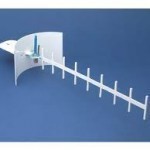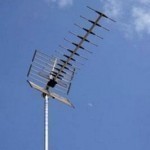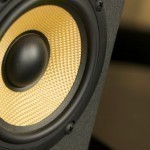What is a Yagi HDTV Antenna? A Yagi antenna is one that uses directional, single-plane dipoles to pick up over-the-air radio transmissions for TV and radio. Yagi antennas have been extremely popular since the 1950s but have declined in use as more users have switched to cable and satellite plans. Yagi antennas are still widely used, however, in areas that are impractical or inconvenient for cable and satellite connections. Yagi HDTV antennas simply refer to Yagi antennas that are capable of receiving an HD signal. How Does a Yagi HDTV Read More
SMB Connector
Sometimes referred to as a sub-miniature connector, the SMB Connector is one member of the family of radio frequency (RF) connectors developed during the decade of the 1960’s. As is true of all RF connectors, the SMB connector is manufactured to work within a wide band of frequencies. What does the SMB Connector do? Designed to work with coaxial cables, the SMB connector acts as an interface between the cable and the electronic device. One of the main advantages of this type of connector is that it does not require Read More
7/16 DIN Connector
The name “7/16 DIN connector” comes from the size of the inner and outer contacts in metric measurements. The inner contact on the 7/16 DIN connector measures 7mm while the outer contact on the connector measures 16 mm. Designed for communications systems, the 7/16 DIN connector can work with equipment with as much as 100 watts of power per channel. 7/16 DIN connectors are used in a variety of applications around the world. Some of these applications include: antennas, base stations, satellite communications, and other high power communications applications. There Read More
Yagi Antenna

Yagi Antennas are one of the most well-known directional antennas in use throughout the world and are used for communications in the medium range of three to five miles between two points. They can also be used as a bridge antenna to connect clients to an access point. The original inventors of the antenna design were Japanese inventors by the last names of Uda and Yagai who came up with the original design in the 1900s. Yagi antennas remain in widespread use today and are also known as beam antennas Read More
Pirate Radio
Pirate radio is broadcasting outside of the rules laid down by the Federal Communications Commission (FCC). Pirate radio usually occurs on the FM band because that is where the most receivers are. Under Part 15 of the FCC rules, you can legally broadcast on the FM band if you broadcast using less that 100 milliwatts of output power and and antenna less than 3' long. In contrast, commercial FM broadcasters are required to broadcast using at least 100 watts of output power. 100 milliwatts will give your signal an effective Read More
How to Ground a TV Antenna

Television antennas are generally installed on top of buildings, which makes the entire structure susceptible to lightning strikes. In order to protect the building that the TV antenna is attached to, the antenna has to be grounded properly. Another danger of mounting a television antenna that is not grounded properly is the excessive static electricity build-up that is discharged to the base structure. Additionally, most city or local ordinances require TV antennas to be grounded in order to minimize fire hazards in residential structures. How to Ground a TV Antenna Read More
How Speakers Blow

A speaker is a device that converts electrical signals into actual sound. Speakers accomplish this by using a magnetic reader or antenna to receive an electrical signal from a radio station or magnetic storage device. The magnetic reader is then connected via a wire to an electromagnet that can be turned on and off in accordance with the electrical signal. The electromagnet is then used to pull a diaphragm back and forth, which moves the air around it. As the air moves, the listener’s ears and brain are able to Read More


Share on: